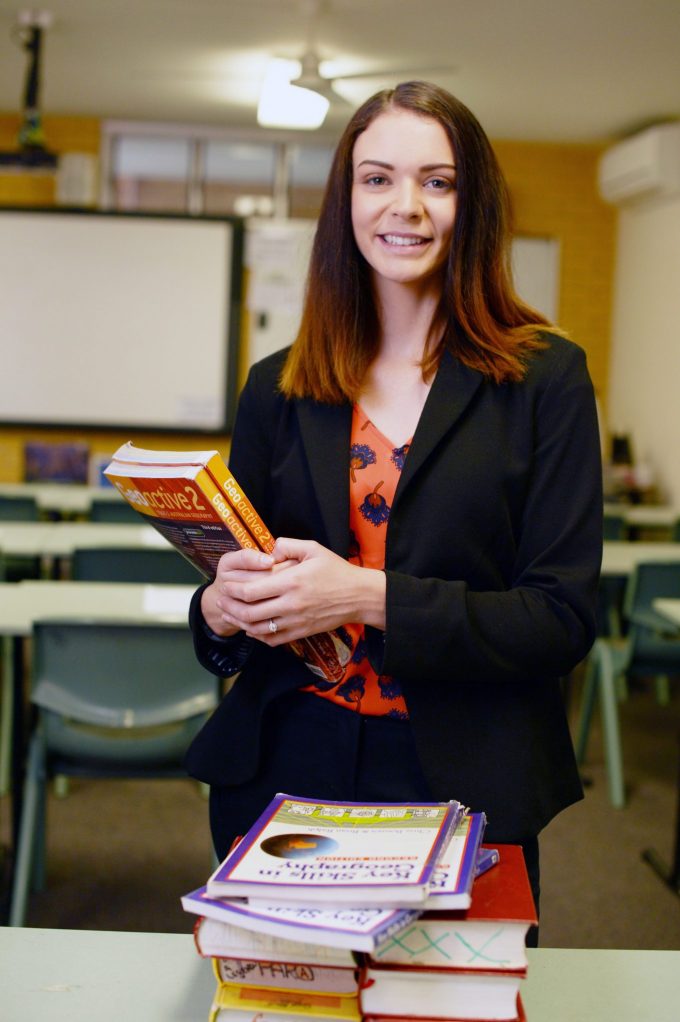Test all students and staff twice a week, or only close contacts? States have different school plans – here’s what they mean
Schools will open for term one across Australia next week – except in Queensland which has delayed the start of the school year.

As the country battles a wave of Omicron infections, states have introduced a comprehensive suite of measures to help reduce school outbreaks, as well as disruptions.
Testing plans rely on regular use of rapid antigen tests (RATs), which the government will provide to schools and parents. They are a very important additional tool in providing a safe school environment.
Victoria and New South Wales strongly recommend primary and secondary staff and students do a RAT twice a week on school days for the first four weeks of term. Because of the greater risk associated with COVID for some students with disabilities, Victoria’s recommendation for specialist school staff and teachers is testing five days a week.
Children who test positive will be required to stay home along with household members for seven days in Victoria.
Regular testing of asymptomatic cases as in NSW and Victoria is known as a “surveillance strategy” and the ACT has similar plans. But while South Australia recommends early education and care staff test several times per week for surveillance, the state’s schools strategy is different and is known as “test-to-stay”. Here, close contacts will need to do a RAT every day for seven days and can attend school if they test negative.
NSW and Victoria will also allow close contacts to attend school as long as they report a negative RAT test.
Both strategies, surveillance and test to stay, have been implemented in several jurisdictions in the United States, Canada and Europe, all of which reopened schools during Omicron outbreaks. But why do different Australian states have different plans, and what is the evidence for these testing measures?
Surveillance and testing to stay: the evidence
Twice-weekly testing for surveillance is voluntary in NSW, Victoria and the ACT, so not everyone will be following the guidelines perfectly. But modelling by the Doherty Institute (using Delta parameters) found detecting infections in school early – such as with surveillance – and high vaccine coverage in the community markedly reduce outbreak risk even if the testing uptake is only 50%.
The modelling also found twice-weekly screening of asymptomatic students in areas at risk of outbreaks can result in even fewer infections and fewer in-person teaching days lost.
The Doherty report also found allowing close contacts to attend school if they test negative, through a test-to-stay strategy, contains an outbreak as effectively as requiring close contacts to quarantine at home.
Doherty’s findings reproduce the outcomes seen in a real-world study when the Delta variant was dominant, which compared standard quarantine to test-to-stay in England. There was no difference in transmission between schools where bubbles were sent into home isolation for ten days versus those where daily contact testing (test-to-stay) was implemented.
Another impressive study from Utah of 13 high schools (November 2020 to March 2021) found using test-to-stay detected an additional 90 infections and saved 109,752 in-person learning days.
In Massachusetts, the test-to-stay program found that of 503,312 tests conducted (up to 9 January 2022), only 1.4% were positive, which was lower than the statewide rate of positive tests. Additionally, secondary transmission rates were found to be low in schools using this strategy and ranged from 0.7% to 2.9%. These studies were done before the emergence of Omicron.
So, which one is better?
The surveillance strategy will help identify any positive cases early, before symptoms develop, and help prevent introducing infections into schools and the broader community.
The test-to-stay strategy minimises the need for children who are not infectious to stay at home unnecessarily, helps reduce days of lost learning and staffing issues, and minimises disruption from quarantine requirements.
The decision on which strategy to take depends on context, including workforce issues and the level of community transmission, and the availability of sufficient quantity of RATs.
When there is a case in the class, test-to-stay should be done daily for close contacts for seven days. But when community transmission is high, it’s best to add surveillance screening twice weekly for staff and students aged five and above (and 3-5 year olds if tolerated).
The Doherty modelling found a synergistic benefit of combining twice weekly surveillance screening with a test to stay policy. The greatest number of face-to-face teaching days gained using this approach occurs when community transmission is highest.
States employing a surveillance strategy will need to revisit this in four weeks, including the uptake and acceptance of testing – specifically the impact of children having regular testing for an infection that has little direct harm to them. There must be a clear off-ramp as the outbreak may also be almost complete and children will be tired of having nasal swabs.
What’s likely to happen when schools open
The number of new cases surveillance detects will always be biased towards the age groups and settings most tested. As schools open, the number of infections will increase, but they will appear to increase even more because intensive testing will find many more mild and asymptomatic cases.
Mobility patterns also change after the school holidays. Because more people are moving around, there will inevitably be an increase in infections in early childhood and school settings. But these will be relatively short-lived and mild, given the overseas experience. States that delay opening schools may simply postpone trouble and lengthen the outbreak. Moreover, there is little evidence closing schools controls infection rates and transmission in the broader community during outbreaks.
Ongoing surveillance in the Netherlands has found adults are the most common source of infection. As children grow older, they are more likely to become the source but still less likely than adults. The study also found teaching staff during the Omicron period up until the time of publication of this article had slightly fewer infections than the general adult population.
COVID vaccination in children is effective at preventing severe disease, but has minimal impact on mild Omicron infections. Any preventive effect against infection may wane quite quickly.
It is understandable many parents will be feeling anxious about schools opening. But it is important to remember COVID in healthy children is generally a mild illness, akin to influenza, so unvaccinated and partially vaccinated children can return safely to school. Although hospitalisation does occur, it is less frequent than other common childhood respiratory viruses.
RATs are an important tool in helping to provide a safe working and learning environment and we strongly encourage school staff and parents to test as recommended.
Correction: This article previously said a child in NSW who tests positive could return to school when symptoms resolve and they record two days of negative tests. This is incorrect and has been removed. We have also clarified the Netherlands study period.![]()







